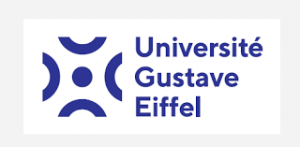Home » Posts tagged 'granular flows'
Tag Archives: granular flows
PhD Positions
A PhD position on “Non-linear soil behavior effects on earthquake recordings: Application to the French mainland sismo-tectonic context” is available at the French Centre for Studies and Expertise on Risks, the Environment, Mobility and Urban Planning (CEREMA). Details on the PhD Project and application procedure on this flyer. For more info, please contact Dr. Anna Chiaradonna (anna.chiaradonna1@univaq.it).
A PhD position on “Optimization of particle transport in polydisperse dense granular flows: towards sustainable processes” is available at the Université Gustave Eiffel (Paris). The project will be supervised by Patrick Richard and Riccardo Artoni (MAST/GPEM laboratory of the Gustave Eiffel University) and by Michele Larcher (Faculty of Science and Technology of the University of Bolzano in Italy). Full details on this webpage.
Granular Matter Webinar Series (24 November 2020)
The 4th Granular Matter Series Webinar will take place next Tuesday, 24 November. The speaker is Ken Kamrin, the topic and abstract are:
To the Continuum and Beyond!
The ability to predict granular flows efficiently has been a major challenge for years. An accurate and robust continuum model would be ideal, as it could lead to fast simulation of industrial and geo-scale problems. However, there are a number of granular flow behaviors that complicate the development of a continuum treatment including coupled history effects, nontrivial phase change, pressure-sensitive yielding, nonlocal effects, and shear banding phenomena. Rather than attempt to combine all these effects together, this talk will begin by identifying a class of problems that tend to be well-predicted using a very simple continuum treatment. These are problems based on intrusion, where the intrusive dynamics of solid objects (e.g. locomotion, impact) is the primary interest. We then discuss two ways to extend this basic continuum framework with nonstandard “add-ons”, in order to handle various complications. First, we will discuss the state of affairs in nonlocal modeling approaches, and focus on some new results pertinent to the physics of nonlocality. Secondly, as an alternative to adding more complexity to the continuum model, we will discuss a hybridized DEM/continuum method that allows us to adaptively choose subdomains in a problem to be treated with continuum modeling vs discrete element modeling. This allows us to keep a simple and fast-to-solve continuum model almost everywhere, while providing a more precise DEM treatment in zones that fall outside the scope of the continuum model.
For more information, this is the landing page: https://www.springer.com/journal/10035/updates/18300828
And this is the link to the meeting room: https://global.gotomeeting.com/join/565338397

